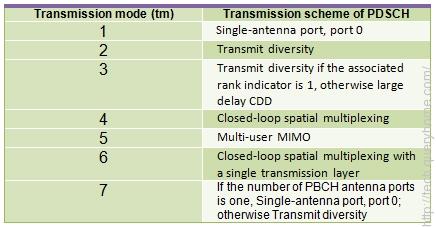Assuming its downlink, following are the steps to debug the issue (Credit: http://lteuniversity.com/get_trained/expert_opinion1/b/lauroortigoza/archive/2012/05/09/downlink-throughput-troubleshooting.aspx )
Step 1: Identify cell with low DL (downlink) throughput
The first thing is to identify those cells with low throughput. This threshold is defined by your network policies and practices (it also depends on your design parameters). Reports should be run for a significant number of days so that data is statistically valid.
Step 2: Identify Downlink interference
a) Cells with downlink interference are those whose CQI values are low (an exception to this rule is when most traffic is at the cell edge –bad cell location-). Analyze the CQI values reported by the UE for
a.1) Transmit Diversity
a.2) MIMO one layer
a.3) MIMO two layers
Typical values for transmit diversity oscillate between 7 and 8.
Typical values for MIMO one and two layers oscillate between 10 and 12.
b) If low CQI values are found after a CQI report is obtained, then downlink interference might be the cause of low throughput.
c) Common sources of interference in the 700 MHz band (LTE deployment in the USA) are: inter-modulation interference, cell jammers and wireless microphones
Step 3: BLER Values
a) Run a report for BLER in the cells identified. The BLER should be smaller or equal than 10%. If the value is larger, then, there is an indication of bad RF environment.
b) Typical causes of bad BLER are downlink interference, bad coverage (holes in the network, etc.)
Step 4: MIMO Parameters
a) Identify the transmission mode of your network. There are seven transmission modes as shown in the table below

b) Adjust the SINR thresholds for transition of transmission modes as recommended by the OEM. Request the Link Level simulations they used to set these thresholds and see if the conditions under which the values were calculated apply to your network. Otherwise, update them if the parameters are settable and not restricted.
Step 5: Low Demand
a) Run a report using the counters provided by the OEM to find
a.1) Maximum number of RRC connections supported per cell (parameter or feature)
a.2) Maximum number of RRC connections active per cell
a.3) Average number of RRC connections active per cell
a.4) Maximum number of users per TTI supported per cell (parameter or feature)
a.5) Maximum number of users scheduled per TTI in the cell(s) of interest
a.6) Average number users scheduled per TTI in the cell(s) of interest
b) If the maximum number of RRC connections active per cell is close or equal to the maximum number of RRC connections supported, then. The cause for low throughput is load.
c) A high number of scheduled users per TTI does not necessarily mean that demand is the cause for low throughput.
Step 6: Scheduler Type
a) Find the scheduler types your OEM supports
b) Select the one that is more convenient for the type of cell you are investigating. Examples of schedulers are: round robin, proportional fairness, maximum C/I, equal opportunity, etc. OEMs allow you to switch the scheduler in your network but recommend one in particular.
c) The wrong scheduler may be the reason for bad throughput.
Step 7: CQI reporting parameters
a) Check if your network is using periodic or aperiodic CQI reporting (or both).
b) Verify the frequency in which the CQI reporting is carried out for periodic reporting as well as the maximum number of users supported per second.
c) If the value is too small compared with the maximum number of RRC active connections, then, increase the values of the parameters CQIConfigIndex as well as RIConfigIndex.
d) If your network is not using aperiodic CQI reporting, then enable it.
e) Slow frequencies of CQI reporting might yield bad channel estimations that prevent the eNodeB from scheduling the right amount of data and Modulation and Coding Schemes to UE.
Step 8: Other
a) Run a VSWR report or ask your OEM to run it for you.
b) High values of VSWR result in low throughput due to losses.
c) Check your backhaul capacity. Often times, the backhaul links are shared among multiple RATs. Make sure your backhaul is properly dimensioned.
